Published Feb 3, 2023
On Star Trek, Death Has Evolved
As Star Trek has changed, so has the franchise's attitudes towards memorializing those they've lost
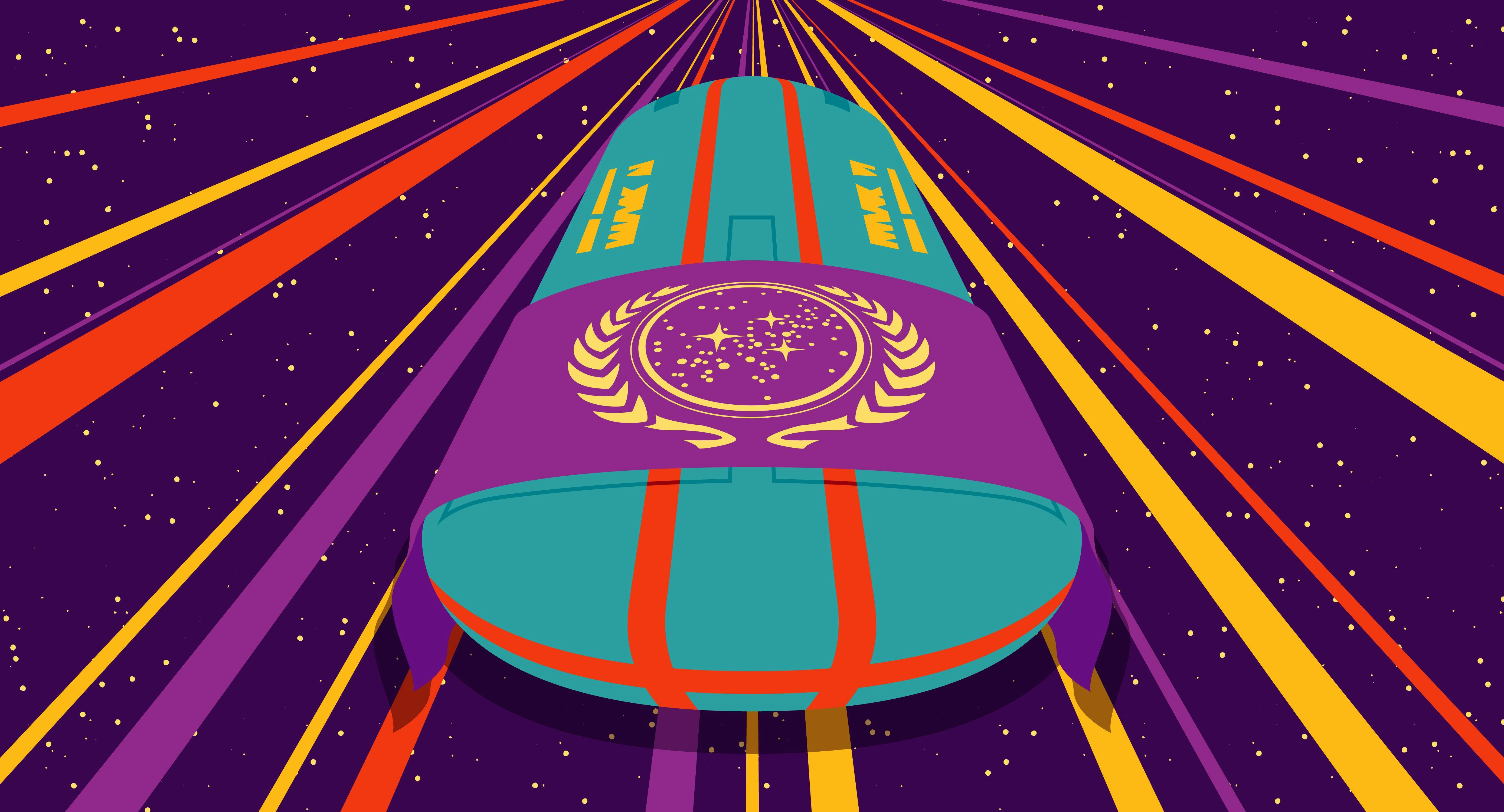
StarTrek.com / Rob DeHart
As Benjamin Sisko stood over the coffin of his lifelong friend Jadzia Dax, he did what so many people do when confronted with loss. He asked her why she was gone now, now when he needed her the most. He spoke to her as if she was sitting across from his desk in the commander’s office at Deep Space 9. Even with a futuristic coffin draped in the flag of the Federation, Jadzia’s death reminded me of being at my grandmother’s wake. It was a Chicago Cubs blanket over her wooden casket, but I still had questions I wanted her to answer.

StarTrek.com
Death is as much a part of Star Trek as it is our own reality, but early on, deaths were often brushed to the side. In Star Trek: The Original Series, death happened and then wasn’t discussed. The Red Shirt Trope emerged for a reason. Some unlucky ensign would join Kirk, Spock and Bones for an away mission, and would inevitably be sacrificed to the alien of the week and never mentioned again.
Even in the early days of Star Trek: The Next Generation, red shirts died and weren’t mentioned again. Ensign Haskell was at the conn when the Enterprise encountered Nagilum, who wanted to see a human die. Haskell had a GIF-worthy death. The crew moved on without another word about him.
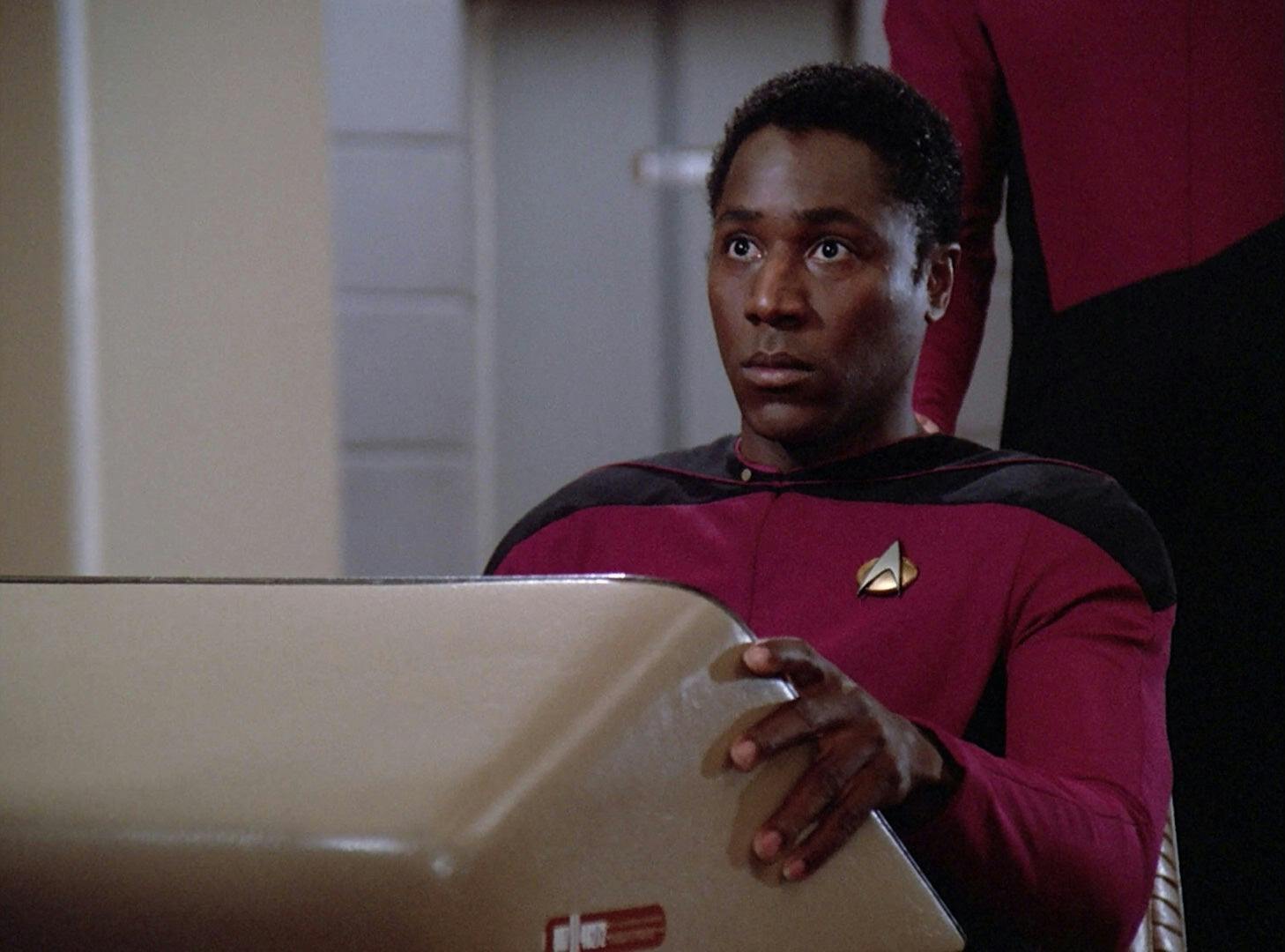
StarTrek.com
As the Star Trek franchise matured, the characters’ reaction to death matured, as well. Death was dealt with, even for so-called red shirts. Enrique Muniz appeared in three Star Trek: Deep Space Nineepisodes. We got to know him mostly as someone who helped out Dax or Miles O’Brien. But when he was killed in “The Ship,” the crew treated him with the kind of respect that showed how important he was to them, as Worf and Miles stayed with Muniz’s body for the journey home. The crew’s reaction to his death said more about Muniz than we ever learned from his appearances on the show.
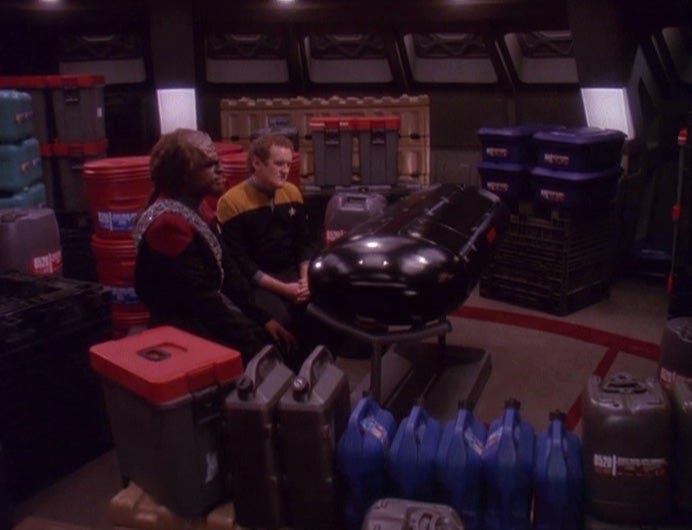
StarTrek.com
Star Trek even started to show what happened when a character didn’t mourn the loss of a colleague. Star Trek: Voyager's “Latent Image” showed how the Doctor, a hologram, was even capable of feeling the pain of death. Ahni Jetal showed up in flashbacks, and only in this one episode. Her death was the result of a choice no doctor should have to make. Instead of chalking it up to another “red shirt” death, the loss of Jetal left an indelible mark on the Doctor’s programming. With this episode, Star Trek put its entire legacy of red shirts behind it.
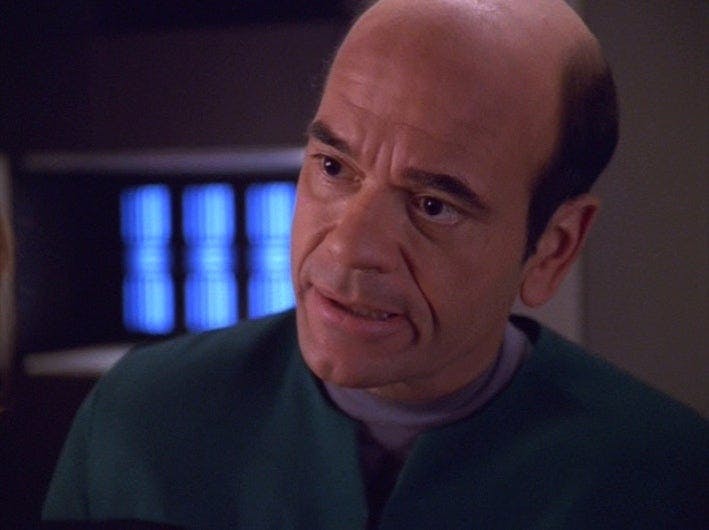
StarTrek.com
The growth of the franchise is likely one of the reasons Star Trek changed its attitude towards death. Each subsequent show takes on more sophisticated issues, and allows for new strides in character development. As its characters grew to become more fully fleshed out, their emotions towards death were bound to become more sophisticated as well.
Two friendships in particular stand out to show this. Kirk’s eulogy of Spock in Star Trek II: The Wrath of Khan, is not just one of the most touching moments in Star Trek history, but in all of American cinema. Kirk’s tears carry weight with viewers not just because of the selfless way Spock died, but because of how their friendship had grown over the years.
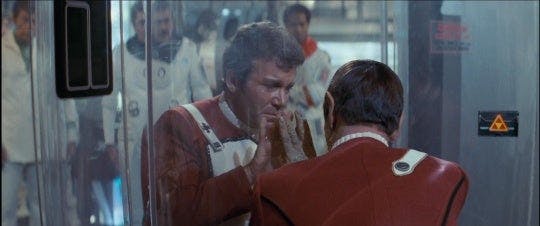
StarTrek.com
Spock’s death had to hurt — both to the members of the Enterprise crew and to the audience. He had earned that pain with every eyebrow raise, every logical barb, every adventure. Kirk and Spock’s relationship stood at the center of the series, so the memorial service had to be strong to show that. To understand what it means for Kirk to call Spock “human,” you have to know their relationship, just as anyone at my grandmother’s wake had to know she was an 80-year Cubs fan to see why that blanket was on her casket. But when you did know, it meant so much more than some words on a screen or a logo on a blanket.
From the first time they met to the very end of Data’s life, Picard was challenged by Data in a way he had not been by any of his other crew members. Even Data’s understanding of his own death, first talked about during “Time’s Arrow,” was different than anything else encountered by Data’s colleagues.
His death inNemesisgave rise to the entire purpose of Star Trek: Picard. We learned what exactly happened to Data’s digital consciousness, and how he directed one final query to his longtime captain and friend, Jean-Luc Picard. In a 24th Century version of a ‘Do Not Resuscitate’ order, Data asks, in a poetic way, to be allowed to die.
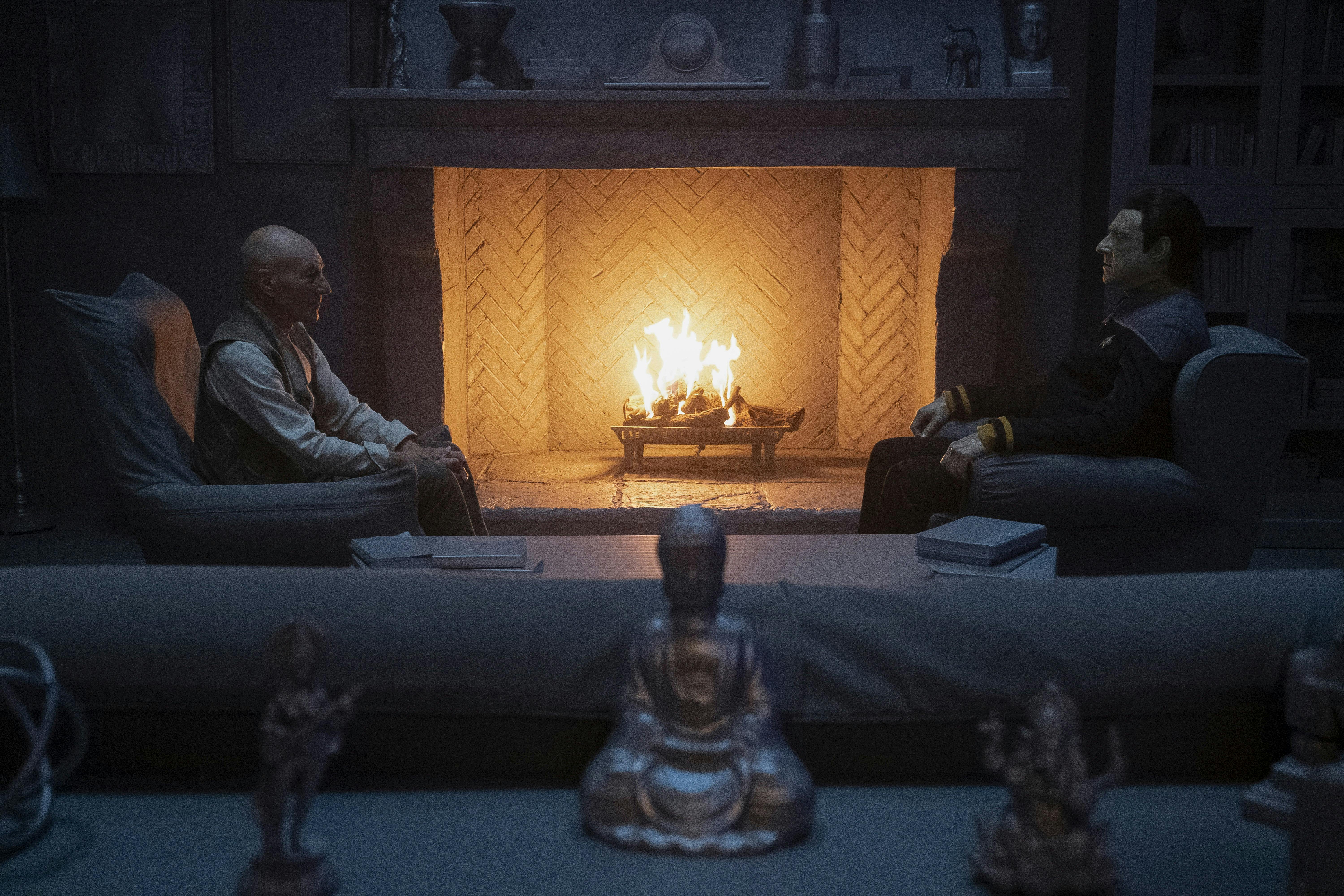
StarTrek.com
“I want to live, however briefly, knowing that my life is finite. Mortality gives meaning to human life, Captain. Peace, love, friendship, these are precious because we know they cannot endure. A butterfly that lives forever is really not a butterfly at all.”
Picard’s quest to find Data’s daughters, and save them, was the best way he could memorialize his friend.
Picard’s determination to honor his friend is a beautiful reminder that in the 24th Century and beyond, Starfleet deaths aren’t mourned solely by burials or sitting at a mausoleum. Just as we need rituals to get through loss today, those rituals are needed by the Star Trek family.
This article was originally published on May 22, 2020.
Maggie Hendricks is based in Chicago and has covered sports and culture for more than 10 years for USA Today and Yahoo Sports. She co-hosts a weekly radio show on 670 the Score, and sneaks in Star Trek references into the sports world as much as possible. Follow her on Twitter @maggiehendricks.
Star Trek: Picard streams exclusively on Paramount+ in the U.S. and is distributed concurrently by Paramount Global Content Distribution on Amazon Prime Video in more than 200 countries and territories, and in Canada, it airs on Bell Media’s CTV Sci-Fi Channel and streams on Crave.
Stay tuned to StarTrek.com for more details! And be sure to follow @StarTrek on Facebook, Twitter, and Instagram.

